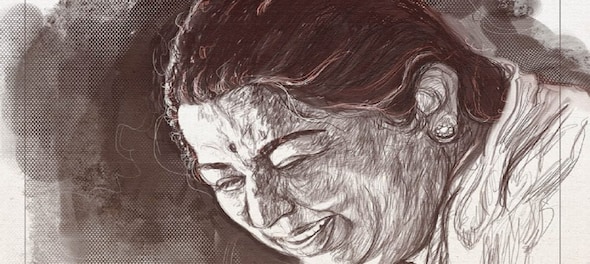
1947 was a pivotal year in the history of our country. As India rose to her independence from British rule, it also went through the painful aftermath of the partition that created Pakistan. However, interestingly what can be said to be the second only decade for Bollywood, movie production and filmmaking did not stop or get hampered because of the national turmoil.
With some creative freedom, one might also want to imagine a stressful time of partition, where the common man needed some respite from the political and economic upheaval and found solace in Bollywood movies and the newly found music industry too. Nevertheless, can you believe that 1947 remains to be a definitive year for India and the Indian music industry as it paved the way for how Indian music was going to shape for the next 3 decades and even after.
So, the year of 1947 started with the sad demise of the iconic K.L. Saigal, the actor-turned-singer created by the New Theatres from Calcutta. He had single-handedly ruled the singing industry since the time it was a live act by the actors while shooting. His last hit remained from the movie Shahjehan in the year 1946 and his demise owing to alcoholism left millions of his fans sad and dejected.
However, as the year proceeded into the turbulent times of partition, movies kept being made and film music remained ever popular. 1947 was also marked by the super hit songs of Do Bhai which gave Geeta Dutt an unprecedented limelight as a singer. Suraiya also had her first major hit with the movie Dard and became a very popular singer from 1947-1950.
One of the biggest takeaways of 1947 was the first ever hit of a young singer — Mohammed Rafi! After making an unimpactful entry into film music in 1944, Rafi had not been able to gain any limelight. But with the duet ‘Yaha Badla Wafa Ka’ in 1947, Rafi became a force to reckon with. Also fuelled by the death of KL Saigal and the major gap in the male singing leads, Rafi rose to a stardom which would later on create history for the next 3 decades.
The partition was also an important event for the film music industry from the point of view of those who decided to stay in India! One of the music directors who made that choice was Naushad. Imagine an alternate reality where Naushad would have chosen to move to Pakistan, and we would have been left deprived of the mega hits such as Daastan, Baiju Bawra and the iconic Mughal-e-Azam. A musical marvel, Naushad went on to create some of India’s biggest musicals throughout the 1940s, 50s and even 60s later on.
Interestingly, another genius who decided to move to Delhi from Lahore post-partition was Sahir Ludhianvi. In 1948, he decided to make the move owing to the freedom curbs in Pakistan. Till date, Sahir is considered to be one of the most respected lyricists of all times for Hindi cinema. Thanks to his decision, Indian music got the gift of ‘Abhi Na Jao Chod Kar’, the most romantic ballad of all time.
Imagine a dynamic tapestry of 1940s Bombay — horse-drawn carts and rickshaws traverse cobbled streets lined with bustling market stalls, while the sea breeze carries the scent of spices from the thriving trade hub. The harmonious blend of cultures resonates through the clinking of chai glasses and the distant rhythms of a sitar, painting a vivid portrait of a city on the cusp of rapid development and timeless charm.
A composer who decided to move to this city from Lahore during these years, went on to become the highest paid composers of his times — OP Nayyar! The legend gave us the songs that only aged with time like fine wine - “Leke Pehla Pehla Pyaar”, “Ishaaro Ishaaron Mein”, “Pukarta Chala Hoon Main” are very few of his many superhits.
However, 1947 was also marked by a very landmark incident for the Indian Music industry. One of the artists who actually decided to move to Pakistan was Noorjehan. She was the biggest force in the female singing industry and had no competition even close to her. She was the favorite of all leading music directors and her absence was set to create a void like never before. This incident paved the way for a young singer to take the Bastian forward. Noorjehan’s exit from India in 1947, coincided with the Hindi film debut in the same year, with the film ‘Aap ki Sewa Mein’, for a singer who ruled the Music industry unparalleled for as long as 60 years! Her name was Lata Mangeshkar.
(Edited by : C H Unnikrishnan)
First Published: Aug 13, 2023 1:02 PM IST
Check out our in-depth Market Coverage, Business News & get real-time Stock Market Updates on CNBC-TV18. Also, Watch our channels CNBC-TV18, CNBC Awaaz and CNBC Bajar Live on-the-go!


BJP replaces Poonam Mahajan with lawyer Ujjwal Nikam for Mumbai North Central Lok Sabha seat
Apr 27, 2024 7:53 PM
Meet Amritpal Singh, the separatist leader contesting Lok Sabha polls from Punjab's Khadoor Sahib
Apr 27, 2024 7:18 PM

